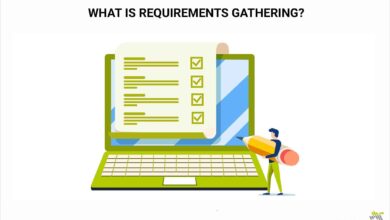The Ultimate Guide to Sales Forecasting: Navigating the Art and Science of Predicting Success

Sales forecasting is a powerful tool that provides businesses with the ability to anticipate future sales, allocate resources effectively, and make informed strategic decisions. In this comprehensive guide, we’ll delve into the world of sales forecasting, exploring what it is, its importance, and the methodologies behind accurate predictions.
1. Understanding Sales Forecasting
Sales forecasting is the process of estimating a company’s future sales within a specific time frame. This forward-looking approach involves analyzing historical data, market trends, and various influencing factors to generate predictions. Sales forecasts serve as a compass for businesses, guiding their actions, resource allocation, and strategic planning.
2. Why Sales Forecasting Matters
Effective sales forecasting is vital for several reasons:
- Resource Allocation: Businesses can optimize their resources, such as workforce, inventory, and marketing budgets, based on anticipated sales volumes.
- Budgeting and Financial Planning: Accurate forecasts assist in creating realistic budgets and financial plans, ensuring that expenses align with expected revenue.
- Strategic Decision-Making: Sales forecasts provide valuable insights for making informed decisions about product development, market expansion, and sales strategies.
3. Sales Forecasting Methods
There are several methods to generate sales forecasts, each suited to different business models and data availability. Some commonly used methods include:
- Qualitative Forecasting: This approach relies on expert opinions, market research, and subjective insights to predict sales.
- Time Series Analysis: Time series data, which tracks values over time, is analyzed to identify trends, seasonality, and patterns.
- Regression Analysis: This statistical method examines relationships between variables to predict sales based on historical data.
- Predictive Analytics: Leveraging advanced algorithms and machine learning, predictive analytics considers a multitude of factors, including past performance, market conditions, and customer behavior.
4. The Role of Revenue Operations
Revenue operations role (RevOps) is very important in sales forecasting. It’s a strategic approach that aligns sales, marketing, and customer success teams to optimize the end-to-end revenue process. RevOps leverages data-driven insights and automation to improve forecasting accuracy, enhance operational efficiency, and drive revenue growth.
5. Steps to Effective Sales Forecasting
Achieving accurate sales forecasts involves several steps:
- Data Collection: Gather comprehensive data, including historical sales data, market research, customer feedback, and external economic indicators.
- Data Preparation: Clean, preprocess, and organize the data to ensure its quality and consistency.
- Model Selection: Choose the appropriate forecasting model based on the nature of your data and the forecasting goals.
- Training and Validation: Train the selected model using historical data and validate its accuracy through testing and validation datasets.
- Continuous Improvement: Continuously update and refine the model to account for changing market conditions and newly available data.
6. The Real-World Impact of Accurate Sales Forecasts
Accurate sales forecasts empower businesses in various ways:
- Inventory Management: Businesses can avoid overstocking or understocking by aligning inventory levels with sales predictions.
- Resource Allocation: Precise forecasts allow companies to allocate their workforce and marketing budgets optimally.
- Risk Mitigation: Identifying potential revenue shortfalls early enables businesses to implement strategies to mitigate risks and downturns.
Sales forecasting is both an art and a science, blending historical data analysis with predictive modeling. When executed effectively, it provides businesses with the insights needed to make informed decisions, allocate resources wisely, and navigate the complexities of today’s markets. By embracing the methodologies and strategies outlined in this guide, you can harness the power of sales forecasting to steer your business towards growth, efficiency, and long-term success.



